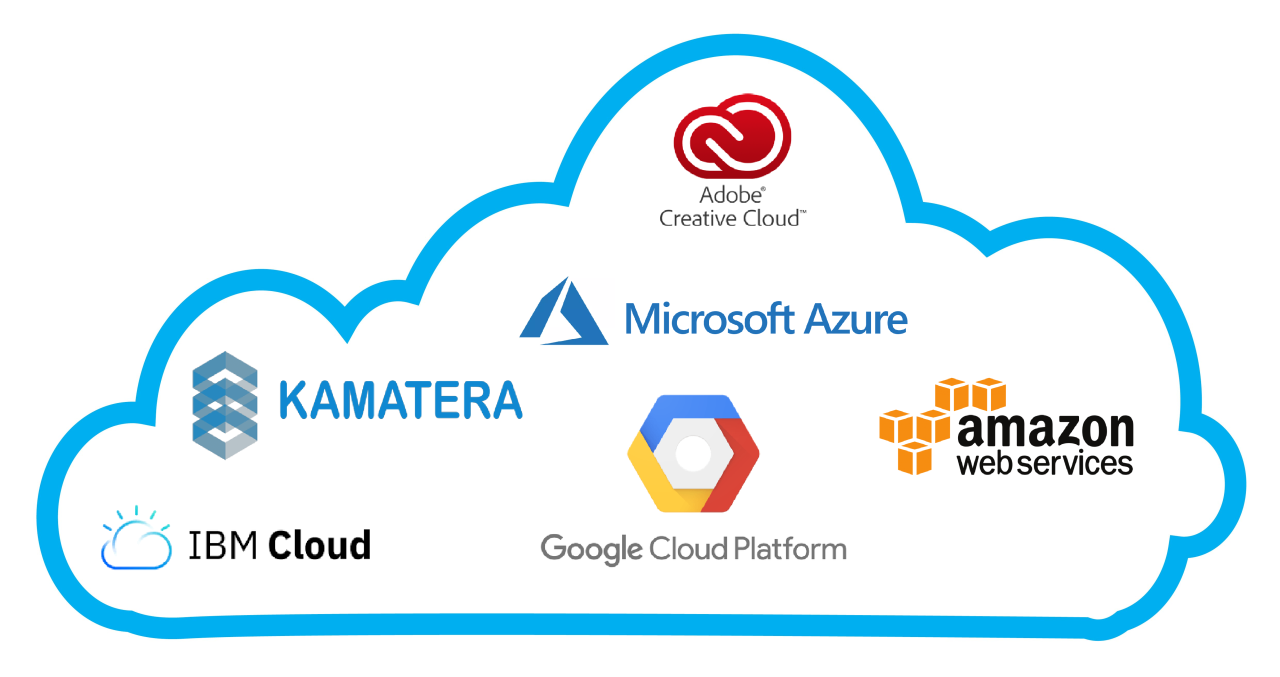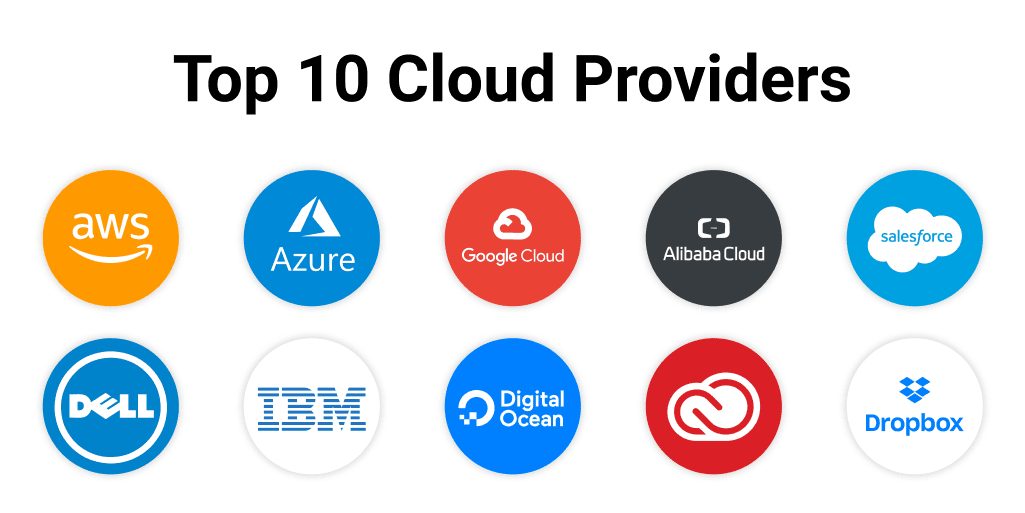Top cloud service providers are reshaping the technological landscape, offering businesses of all sizes unprecedented scalability, flexibility, and cost-effectiveness. This analysis delves into the competitive dynamics of the market, comparing leading players like AWS, Azure, and Google Cloud Platform across key aspects such as service offerings, pricing models, geographic reach, security, and customer support. We’ll explore their strengths and weaknesses, helping you make informed decisions about your cloud strategy.
Understanding the nuances of each provider is crucial for optimizing cloud spending and ensuring business continuity. This exploration will examine various pricing models, cost optimization strategies, and the implications of geographic data center choices. We will also delve into the importance of robust security features and compliance standards in a cloud environment, providing insights into best practices for securing sensitive data.
Open Source Software Support: Top Cloud Service Providers

The leading cloud providers offer varying levels of support for open-source software (OSS), impacting the choices organizations make when deploying applications and services in the cloud. This support ranges from basic compatibility assurances to comprehensive managed services for specific OSS projects. Understanding these differences is crucial for selecting the right cloud platform for your open-source needs.
Open-source solutions offer significant benefits in cloud environments, including cost savings, flexibility, and community-driven innovation. However, relying solely on community support can present challenges, particularly when dealing with complex deployments or critical production systems. The level of support provided by cloud providers directly addresses these challenges, bridging the gap between the open-source community’s efforts and the enterprise’s need for reliability and stability.
Comparison of Open Source Software Support Across Cloud Providers
Amazon Web Services (AWS), Microsoft Azure, and Google Cloud Platform (GCP) all support a wide range of open-source software. However, their approaches differ. AWS often emphasizes its broad compatibility with various OSS projects, providing tools and services that integrate seamlessly. Azure focuses on specific partnerships and managed services for popular open-source databases and platforms. GCP emphasizes its open-source ethos, contributing actively to many projects and offering strong support for Kubernetes, a container orchestration system widely used in cloud environments. While all three offer support, the depth and breadth vary depending on the specific open-source project and the level of service required.
Benefits and Drawbacks of Using Open-Source Solutions in a Cloud Environment
The benefits of using open-source solutions in the cloud are substantial. Cost efficiency is a major driver, as many OSS projects are free to use, reducing licensing fees. The flexibility offered by open-source allows for customization and tailoring to specific needs, unlike proprietary software. The large and active communities surrounding many OSS projects ensure ongoing development, improvements, and a readily available pool of expertise. However, relying solely on community support can lead to slower response times for critical issues, a lack of guaranteed SLAs (Service Level Agreements), and potential security vulnerabilities if not carefully managed and updated. The complexity of managing open-source deployments in a cloud environment can also be a significant drawback, requiring specialized skills and resources.
Examples of Popular Open-Source Projects Supported by Cloud Providers
Several popular open-source projects receive strong support from multiple cloud providers. For example, Kubernetes, the container orchestration platform, is heavily supported by AWS (with EKS – Elastic Kubernetes Service), Azure (AKS – Azure Kubernetes Service), and GCP (GKE – Google Kubernetes Engine). Each provider offers managed services that simplify the deployment and management of Kubernetes clusters. Another example is PostgreSQL, a widely used open-source relational database. All three major cloud providers offer managed PostgreSQL services, streamlining database administration and ensuring high availability. Similarly, many popular Linux distributions, such as Ubuntu and CentOS, enjoy strong support across these platforms, making them readily deployable within their respective cloud environments. These examples demonstrate the significant overlap and the strategic importance of supporting popular open-source projects for the major cloud providers.
Future Outlook and Predictions

The cloud computing market is poised for continued explosive growth, driven by increasing digital transformation initiatives across all sectors, from small businesses to multinational corporations. This expansion will be characterized by a shift towards more sophisticated and integrated services, a heightened focus on security and compliance, and the emergence of new technologies that fundamentally reshape how we interact with the cloud.
The next decade will witness a significant expansion of cloud services beyond traditional infrastructure-as-a-service (IaaS) and platform-as-a-service (PaaS) offerings. We can expect to see a more pronounced focus on serverless computing, edge computing, and AI-powered solutions, as businesses seek to optimize efficiency, reduce latency, and extract greater value from their data. This evolution will necessitate greater interoperability between cloud platforms and on-premises infrastructure, blurring the lines between traditional IT architectures and cloud-native environments.
Growth Areas in the Cloud Computing Market
Several key areas will drive significant growth within the cloud computing market. Firstly, the burgeoning Internet of Things (IoT) will generate an immense volume of data requiring robust cloud-based storage and processing capabilities. Secondly, the rise of artificial intelligence (AI) and machine learning (ML) will necessitate scalable and flexible cloud infrastructure to support the computationally intensive tasks involved in training and deploying AI models. Thirdly, the increasing demand for enhanced cybersecurity measures will fuel the growth of cloud-based security solutions, including threat detection, vulnerability management, and data loss prevention. Finally, the increasing adoption of hybrid and multi-cloud strategies will create opportunities for cloud providers offering integrated management and orchestration tools. For example, the healthcare industry is rapidly adopting cloud solutions for managing patient data and supporting telehealth initiatives, while financial institutions are leveraging cloud-based platforms for fraud detection and risk management.
Disruptive Technologies Shaping the Cloud Landscape
Several disruptive technologies are poised to reshape the cloud computing landscape in the coming years. Quantum computing, while still in its nascent stages, has the potential to revolutionize various fields by enabling the processing of complex problems beyond the capabilities of classical computers. This could lead to breakthroughs in areas such as drug discovery, materials science, and financial modeling, driving demand for cloud-based quantum computing resources. Furthermore, advancements in edge computing will enable businesses to process data closer to its source, reducing latency and improving real-time responsiveness in applications such as autonomous vehicles and industrial automation. The increasing adoption of serverless computing architectures will further streamline application development and deployment, allowing businesses to focus on core functionalities without managing underlying infrastructure. For instance, the rapid growth of mobile applications and the need for scalable backend infrastructure are fueling the demand for serverless solutions.
Evolution of Cloud Service Offerings, Top cloud service providers
Leading cloud providers will likely respond to evolving market demands by offering increasingly sophisticated and integrated services. This will involve a greater emphasis on AI-powered automation, improved security features, and enhanced support for hybrid and multi-cloud environments. We can expect to see the emergence of more specialized cloud services tailored to specific industry needs, as well as a greater focus on sustainability and environmental responsibility. For example, major providers are already investing heavily in renewable energy sources to power their data centers and are developing tools to help customers reduce their carbon footprint. The evolution towards more comprehensive platform services that integrate development, deployment, and management tools will simplify the process for businesses of all sizes to adopt and utilize cloud technology effectively.
The cloud computing landscape is dynamic and constantly evolving. Choosing the right cloud service provider requires careful consideration of your specific business needs and long-term goals. By understanding the strengths and weaknesses of each major player, as well as emerging trends in the industry, businesses can leverage the power of the cloud to drive innovation and achieve sustainable growth. This comprehensive overview provides a strong foundation for making informed decisions and navigating the complexities of the cloud computing market.
Top cloud service providers like AWS, Azure, and Google Cloud are constantly evolving to meet the demands of businesses. Understanding their strategies requires keeping abreast of the latest innovations, which is why following resources like this article on Cloud Computing Trends Shaping the Future is crucial. This knowledge helps us better assess how these top providers will continue to adapt and innovate in the ever-changing landscape of cloud computing.
